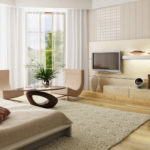 Personalizing a space is essential in creating an environment and atmosphere that reflects an outward expression of ourselves. Yet too often I see spaces that have been copied out of catalogs or are a hodge podge of assorted items that don’t work together let alone belong together. The goal is to create a home and office that shows who you are. Many clients struggle to find an identity in their surroundings by using furnishings and decor that don’t relate to one another and to which we don’t have a personal connection. Our spaces outwardly reveal ourselves like the pages in a book reveal the characters. When we don’t have a sense of our personal tastes or can’t convey that externally, our surroundings suffer.
Personalizing a space is essential in creating an environment and atmosphere that reflects an outward expression of ourselves. Yet too often I see spaces that have been copied out of catalogs or are a hodge podge of assorted items that don’t work together let alone belong together. The goal is to create a home and office that shows who you are. Many clients struggle to find an identity in their surroundings by using furnishings and decor that don’t relate to one another and to which we don’t have a personal connection. Our spaces outwardly reveal ourselves like the pages in a book reveal the characters. When we don’t have a sense of our personal tastes or can’t convey that externally, our surroundings suffer.
With the availability of interior furnishings at our fingertips, we can get lost in choosing the right look that shows who we are. It is the same with someone who doesn’t have a fashion sense and who doesn’t know in which clothes and colors they look best. The fabrics, textures, color shades don’t jive and work against the person, detracting from their appearance. When we don’t have a sense of the same concepts in our home, we lose our way with mix of fabrics, textures, colors and scale that compete with each other and don’t create the necessary harmony required for a cohesive space. There is many a straight, single male who will default to choosing a black leather couch to sit in front of his big screen TV and think that’s styling. I beg to differ.
Mood, harmony, and function are 3 key ingredients we need to make a space work effectively. What’s the feel we are going for? Many don’t even consider the mood or tone they want in a specific space. This critical piece of the puzzle is either totally ignored or nominally considered. How do we want to feel when in our living room? What’s the mood of our home office, kitchen and family room? These questions need to be asked and answered so we can gather the materials to best reflect that. This will significantly impact the choices we make regarding our furniture and accent choices.
Harmony, another key element, lets us know if the pieces we’re choosing work together and support the overall mood as well as if they work in concert with each other. I often see a variety of pieces and accessories that were purchased on a whim or because they were on sale. This approach cheapens the feel of the space as these misaligned components detract from the space and don’t harmonize it. We try to make them work yet they end up working against each other instead. And other times I’ll see decor piled atop of other decor that detracts from the space instead of enhancing it.
Third, we consider function. How is the space meant to function–how are we purposing the area, what activities will occur there and who will be using it? Are we creating an eating area that will double as the kid’s homework area, mom’s planning space and the mail drop off? Then we need to consider the furniture that can be used for high traffic as well as flooring and have the right storage solutions to handle the workload. We also need to consider the scale of the furniture of the area in question so it fits the space and doesn’t overpower or look too small in a large room. And are we purposing an area for too many activities? Do we need to cut out some of those and move them elsewhere, if possible?
Consider creating a space that accurately reflects you as well as creates the feel you want in that area. Edit and delete what you don’t want and need and create a space that shows off you. If you should need help, give us a call at 510.501.1213.
